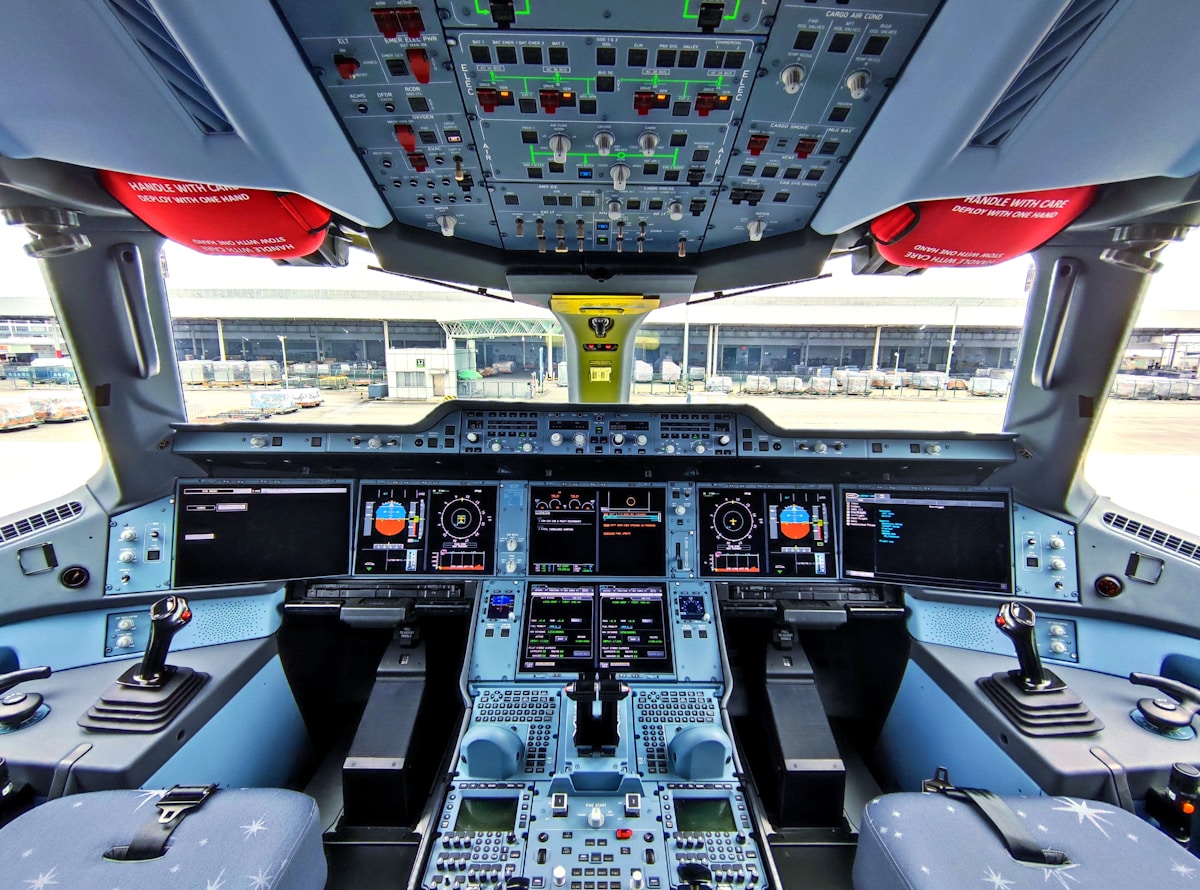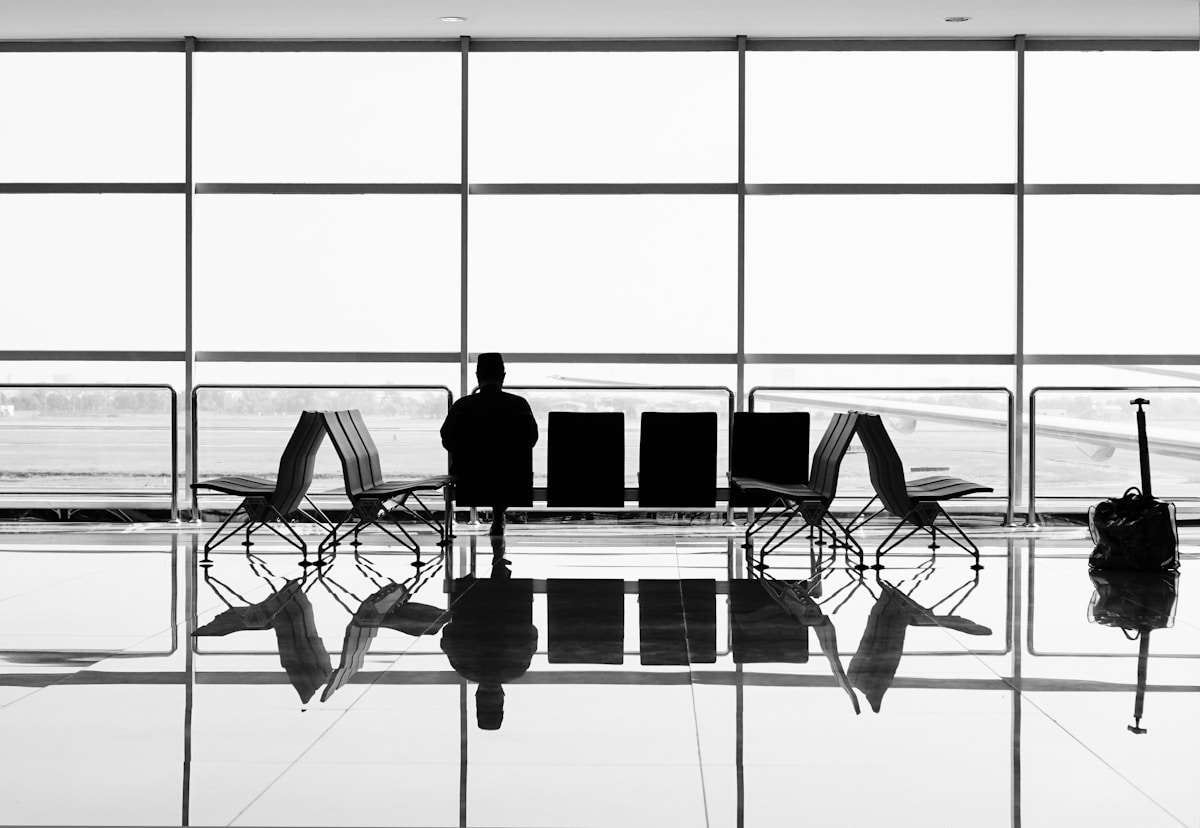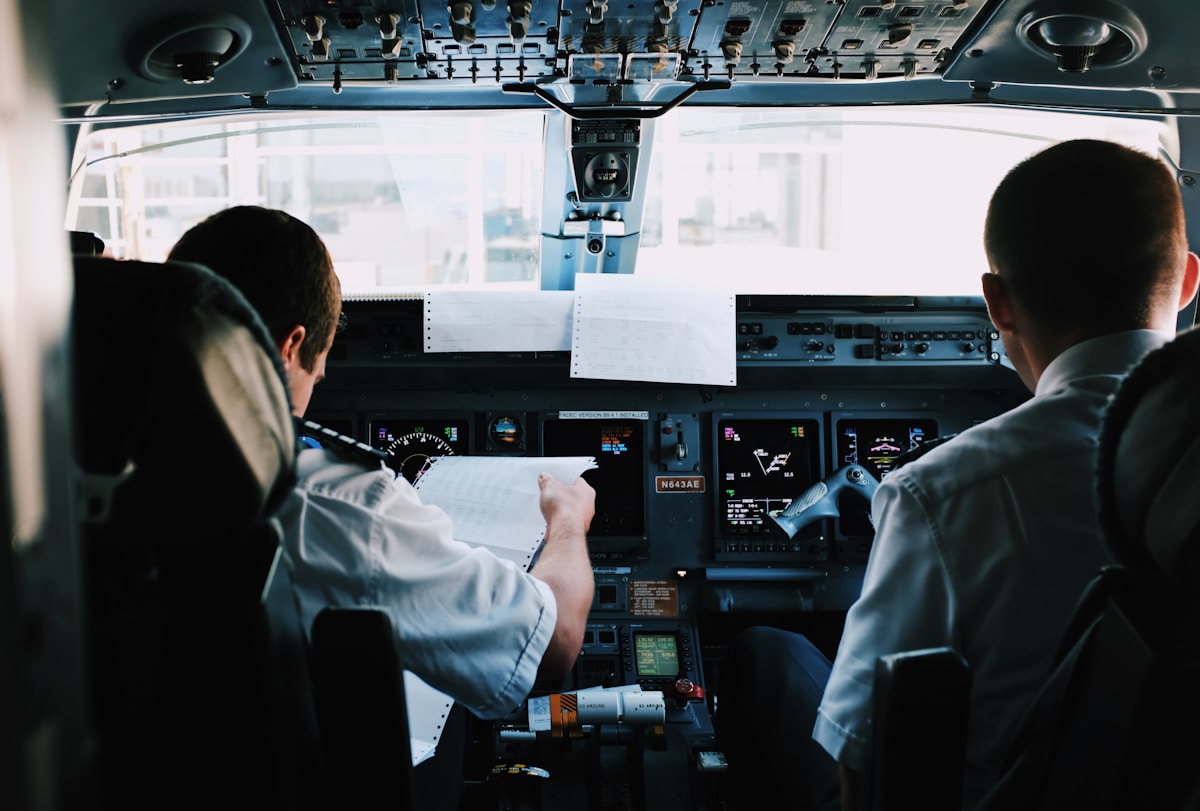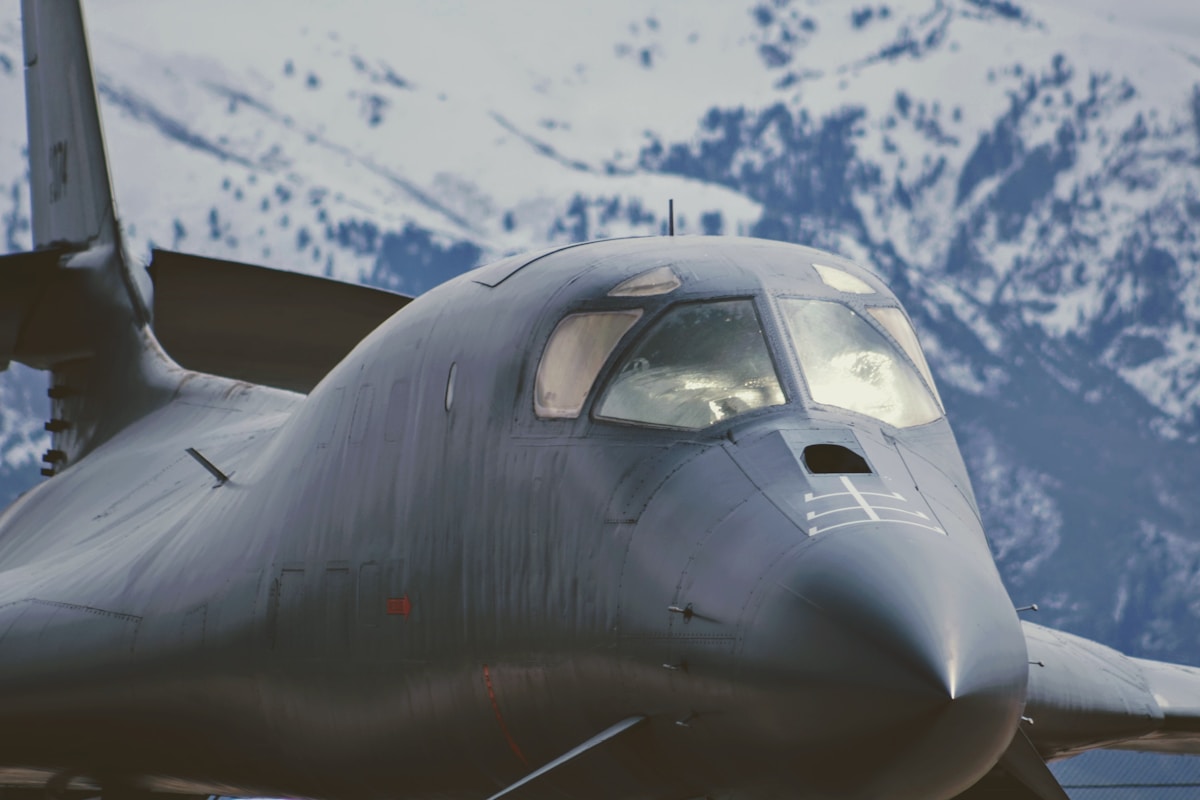Pilot Shortage

There is a severe absence of pilots in the world of aviation that is beginning to loom over commercial airline companies. Examining the problems that are creating this void of pilots must be done in order to reverse the effects of a lack of pilots in the aviation industry and workforce. Visiting regulation, demographic trends, and socioeconomic trends provides excellent insight as to why there may be this shortage.
Specifically, examining regulations like hour requirements and mandatory retirement will produce data on how it adversely affects the number of pilots that are able to be hired with airline companies and then remain employed with said airline. Furthermore, analyzing where airlines mainly recruit their pilots from shows more data on how and why there is a smaller pipeline of pilots. The last method of speculating what is causing the pilot shortage brings a point to examine the cost of pilot training and the compensation that is given after acquiring the proper flying certificates.
After examining such factors, it becomes apparent that regulations that require more flight hours before being employed with an airline do not reduce accidents, nor does it decrease the number of pilots acquiring airline transportation pilot certificates. Additionally, establishing a mandatory retirement age should be relaxed in order to reduce the volume of pilots exiting airlines.
More findings suggest that the military is no longer becoming a supplemental source of pilot employees for the airlines, but are now acting as a competitor to airlines. Lastly, the cost of becoming a pilot is far too expensive compared to the compensation for entry-level positions in the aviation industry. There needs to be more incentives to becoming a pilot and more airline programs that allow a pilot to start training with zero hours and then become an airline pilot if airlines truly wish to prevent a severe pilot shortage.
The Pilot Shortage

Every industry needs a healthy pipeline of laborers to enter the workforce so that the industry itself can remain relevant and continue to benefit public needs as well as the economy.
Such is the same with the aviation industry. There is a looming pilot shortage that may harshly affect the aviation industry, and advertently effect the global economy. Researching what trends are causing this shortage to exist will provide better insight on how it can be avoided so that the aviation industry is not negatively altered in any way.
Pilots play a major role in global transportation and economic travel. Aviation in the past years has evolved from a luxury experience to a pillar of business and leisurely travel (Caraway, 2020). As time goes on, the necessity of air travel will become even greater.
To gauge what the demand of pilots needed to sustain travel, Boeing did research and discovered that by 2037, the global demand for pilots would be 790,000 (Caraway, 2020). This means that the U.S. will need to supply 36,683 each year between 2018 and 2037 (Caraway, 2020). If the aviation industry cannot find a solution to its pilot shortage, the entire global economy will suffer (Caraway, 2020). The suffering results from the lack of pilots aviation companies can produce since aviation allows many business models to exist and other globalization opportunities.
The importance of this research is to conclude what changes could possibly be made in order to recruit more pilots and keep a healthy pipeline of pilots to the aviation industry. With more data and research, discovering the true cause of the pilot shortage can be accomplished. After finding the root problem of the pilot shortage, there is then an opportunity to determine what will resolve the issue.

There are essentially four reasons that can be examined and speculated for the cause of the shortage in pilots. The imposed “1,500 Hour” rule imposed by the FAA, mandatory retirement also imposed by the FAA, and other socioeconomic demographic factors that contribute towards the pilot shortage (Caraway, 2020). Of course, the bulk of research is made prior to the pandemic the COVID-19 disease has caused. Supplementing the old findings with speculation on what is to come in the future as a result of COVID-19 must be done in order to find an accurate cause and recommendation on what is to be done for the pilot shortage.
The first historical background to be examined is the notorious “1,500 Hour” rule. First, a proper definition of what the rule is should be done in order to set a solid understanding of how this could affect the current pilot shortage. The rule requires that the first officer is to have at least 1,500 hours of total time in an aircraft before they are to participate in commercial airline operations (Garcia, 2018). Additionally, the same rule put in place by the FAA also states that the first officer will also need to have 1,000 hours of flight time in a commercial airline setting before they can upgrade and be qualified to fly as a captain (Garcia, 2018). This means it will take longer for a pilot to accumulate the standard number of hours in order to be qualified as a first officer. Prior to this change, the minimum hour requirement was a total of 250 hours, but that changed in 2013 after the Colgan Air fatal accident (Caraway, 2020).

The reason for the rule to pass by the FAA was to promote safety, by assuring pilots with ample experience enter the workforce so that the number of accidents decrease. This is not the case when examining the findings in the number of accidents in the commercial airline industry. The data in airline accidents in comparison of the number of miles flown does decrease after the “1,500 Hour” rule went into effect in 2013, but it was already on a decline in the years prior to the rule change (Caraway, 2020). After examining this data, there needs to be more focus on what was the cause of the accident decline. The accident decline trend actually occurred in 2004, meaning something in the year 2002 or 2003 was the cause of the decline (Caraway, 2020). That means that the rule was set in place but did not necessarily fill its purpose of promoting safety, at least when looking at the raw data of accident trends.
Before labeling the “1,500 Hour” rule as a root cause for a pilot shortage, there are a few items to take note of. Pilots who were previously flying in military branches are able to enter the commercial airline industry as a first officer before accumulating 1,500 hours and the same goes for those who graduated from a University with a Bachelor’s degree and training in aviation (Silk, 2017). Also, the “1,500 Hour” rule was introduced and is imposed by the FAA, a U.S. governmental body. This means that other pilots globally are not affected by this piece of legislation.
Mandatory retirement is implemented by the FAA and has been since 1960, and at the time, the mandatory retirement age was 60 years old before increasing to the age of 65 in 2007 (Caraway, 2020). Obviously, if there is huge group of pilots retiring all within a small span of time, say 2-3 years, there will be a very significant shortage in the aviation workforce, specifically in the flight deck. The purpose of the rule was that there was a significant decrease in both the mental and physiological areas of pilot performance. Originally, in 1960, the FAA had released the four main reasons they meant to impose the rule. The factors of the rule placement are as follows: aging causes progression of deterioration in psychological and physiological functions, the effects of aging cannot be determined on a uniform scale, as individuals age at different paces, the negative effects of aging occur faster in those who have already met the later stages of life, and the effects of aging can happen at a very sudden rate and some individuals may be unable to determine whether those negative effects have already commenced (Caraway, 2020). More research and study of aging would have to further develop in order to reverse these rules, and they did in 2007.
There are two other factors that could be the possible cause of the pilot shortage.

The demographic of military pilots in the industry as well as the socioeconomic factor of pilot pay and training costs. Most of the pilots that were hired into airlines came from the military in the 1980s (Caraway, 2020). This means that the military was a nice complimentary supplement of pilots meant to work in the commercial airline industry but since then, demographics have changed. Even in March, 2020, the U.S Airforce was experiencing a shortage of pilots as were other branches of the military (Caraway, 2020).
This creates a unique situation where the Airforce now has to act as a competitor for pilots and offer incentives to recruit pilots. Speculation could be made that the branches of the military are experiencing a pilot shortage because there have not been any major wars, which were previously the main reason why the branches of military would have an influx of pilots.
Socioeconomic factors also come into play when examining the possible cause of the pilot shortage. As previously stated, the military was the main source of where airlines would locate and hire their pilots, and currently, the opposite is true. There are more civilians entering the aviation industry which means that the cost of training is no longer supported by the taxpayer. Currently, if a pilot were wishing to go from 0 flight hours to becoming a certified flight instructor (CFI), it would cost them $80,000 (Pletz, 2020). This is a large amount of money if an individual were to want to accomplish this feat in the span of a year and a half, which is about how long it would take. Adversely, if a pilot wished to utilize their CFI license, they would only be compensated around $49,000 (Epic Flight Academy, 2017).

If a pilot were to accumulate their hours to 1,500 hours by exercising their CFI license, they could work as a regional airline pilot, which would offer a salary of around $36,000 (Epic Flight Academy, 2017). After researching the numbers and compensation based on the cost of becoming a pilot, it seems that the process would not be worth the amount of debt going into if the individual were to take out a loan to pay for training. The price of training would only increase if the individual were to want to go to an aeronautical university to complete their training as well.
After going over the possible causes, more suggestions and conclusions can be derived. There are major takeaways from each of the four factors that are possibly contributing towards the pilot shortage. The “1,500 Hour” rule did not actually promote safety as previously mentioned. The decline in accidents was already trending downwards since 2004 even though the rule became active in 2013. Additionally, the number of pilots receiving their airline transportation pilot (ATP) certificate remains the same rate even after 2013 (Office of Federal Register, 2020). This means that there are not any issues with the current pilots who hold a commercial pilot’s license are still acquiring and qualifying for an ATP certificate. This is currently subject to change due to COVID-19, which essentially put the globe in a stagnant state as the public were attempting to flatten the curve of COVID-19 cases and wait for a vaccine. Speculation suggests that because of the COVID-19 disease, the United States will not see the demand for pilots return until late 2022 or early 2023 as U.S airlines are at 76% of their capacity pre-pandemic (Murray, n.d.). As the year 2021 unfolds and the vaccine is continuously dispersed, there is hope that the return of demand for pilots will return sooner than later.
Early retirement is coming into effect just as importantly as mandatory retirement is. In order for airlines to preserve capital and cashflow, they began offering early retirement packages to senior pilots with the highest salaries amid the COVID-19 pandemic due to the drastic decrease in passenger travel (Murray, n.d.). This was necessary as they were overcompensating their most senior employees even though they were not flying passengers and helping generate revenue. Before the COVID-19 pandemic, pilots were being forced into retirement on an average of 5,775 pilots a year (Caraway, 2020). These two factors combined may very well be the main cause of what will set off an entirely new estimate in the shortage of pilots.
Military flying is at an extreme low and is creating a new competitive market for the recruitment of pilots.

Since there have not been any major wars, there have not been any surpluses of pilots that are able to transition from flying military aircraft to passenger transportation and travel. Peaks of pilot training in the military occurred in the Korean War as well as the Vietnam War, and since then, all of the surplus of pilots have all retired by 2019 due to FAA mandatory retirement regulations (Caraway, 2020).
Finally, there is the issue of numbers when an individual desires to enter the aviation industry as a civilian. Using previous costs and compensation values, if a person wanted to attend a four-year aeronautical university and complete training with the university, it would cost them $110,000. If that were to be taken out in loans and they were given a 4.79% for ten years, they would be required to pay back $13,865 the initial year. If they had a CFI job and were able to make around $49,000, the loan payment would account for a little more than a quarter of their salary. The income decreases and the amount of the loan payments would swallow their salary if the same individual were to take a position as a regional airline first officer.
The main issue with the findings is the number of pilots entering the industry. Pilots are not nearly as encouraged to enter the industry as the expenses heavily outweigh the compensation. Yes, the salary and compensation will increase as a pilot sticks with a regional airline and gains seniority, but they would have to endure many moments of poverty. Since there is no large issue with the safety concerning the “1,500 Hour” rule and there are still a consistent number of pilots qualifying for an ATP certificate, changing the rule would not be very beneficial to the pilot shortage.
Additionally, because war increases the number of pilots, going to war with another country is not a viable option to stop the pilot shortage, for obvious reasons. Pilots are retiring now more than ever but the pilots that were forced or incentivized into retirement could have already been set to retire in the coming years, making it hard to distinguish whether or not that will be a major issue in the coming years.
For recommendation on what airlines, the FAA, and individuals can do to help stop the negative effects of the pilot shortage include changing regulation and promoting better compensation and programs to help the pipeline of pilots in the aviation industry. If the FAA were to be more lenient to aging pilots, then the industry would be able to stave off the pilot shortage. Technology in the aircraft is becoming more and more advanced, this could be a possible aid to the negative effects of aging pilots. Also, if pilots are encouraged by airlines with more programs like training from 0 hours to being hired as an airline pilot and then taking salary cuts from the airline, they would possibly be more motivated to enter the airline workforce.
Written by Pilot Bain Campbell
References
Pilot shortage? (2012). Travel Weekly, 71(18), 4.
Gordon, P., Price, G., & Clarkson, S. (2021). The conversation. Logistics & Transport Focus, 23(1), 12.
Klapper, E. S., & Ruff-Stahl, H. J. K. (2019). Effects of the Pilot Shortage on the Regional Airline Industry: A 2023 Forecast. International Journal of Aviation, Aeronautics, and Aerospace, 1–12. https://doi.org/10.15394/ijaaa.2019.1321
Bowlin, F. (2018). PILOT SHORTAGE? IFR, 34(10), 1. https://go-gale-com.ezproxy.libproxy.db.erau.edu/ps/i.do?p=AONE&u=embry&id=GALE%7CA557992283&v=2.1&it=r&sid=summon
Caraway, C. (2020). A Looming Pilot Shortage: It is Time to Revisit Regulations. International Journal of Aviation, Aeronautics, and Aerospace, 2–16. https://doi.org/10.15394/ijaaa.2020.1470
Garcia, M. (2018, July 29). A “Perfect Storm” Pilot Shortage Threatens Global Aviation. Forbes. https://www.forbes.com/sites/marisagarcia/2018/07/27/a-perfect-storm-pilot-shortage-threatens-global-aviation-even-private-jets/?sh=39a706901549
Silk, R. (2017, August 18). How 1500 hour rule created pilot shortage. TW. https://www.travelweekly.com/Robert-Silk/How-1500-hour-rule-created-pilot-shortage
Pletz, J. (2020, February 5). How bad is the pilot shortage? United is buying a flight school. Retrieved from https://www.chicagobusiness.com/airlinesairports/how-bad-pilot-shortage-united-buying-flight-school
Epic Flight Academy. (2019, March 17). How much is an airline pilot’s salary. Retrieved from https://epicflightacademy.com/airline-pilot-salary/
Office of the Federal Register. (2020, March 24). Electronic code of federal regulations. Retrieved from https://www.ecfr.gov/cgi-bin/textidx?&c=ecfr&tpl=/ecfrbrowse/Title14/14tab_02.tplMurray, G. (n.d.). After Covid-19, Aviation Faces a Pilot Shortage. Oliver Wyman. https://www.oliverwyman.com/our-expertise/insights/2021/mar/after-covid-19-aviation-faces-a-pilot-shortage.html